Excerpts from Jim Conrad's
Naturalist Newsletter
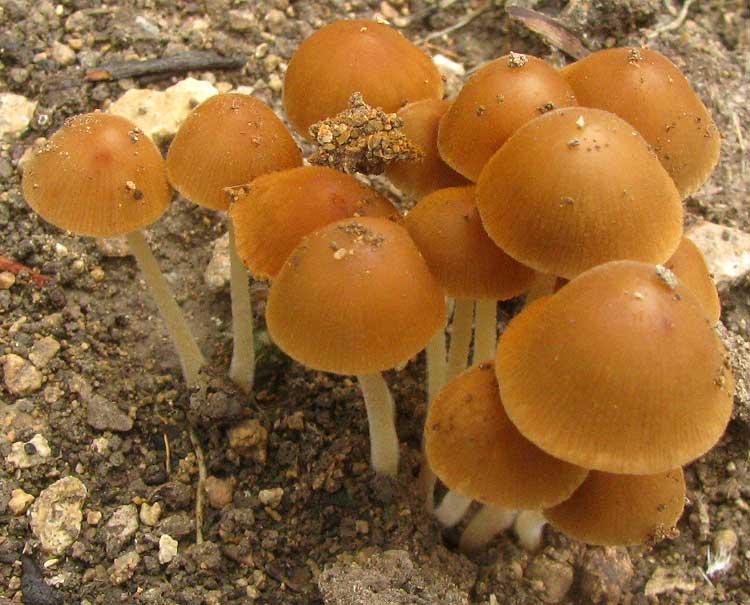
from the June 29, 2014 Newsletter issued from the Frio Canyon Nature Education Center in the valley of the Dry Frio River in northern Uvalde County, southwestern Texas, on the southern border of the Edwards Plateau; elevation ~1750m (~5750 ft); N29.62°, W99.86°; USA
GOLDEN CONECAP
After long months of no rain, I'd thought that our Memorial Day cloudburst would usher forth a plenitude of mushrooms, but to my amazement they never emerged, except for some small, ephemeral inky-caps of which we've seen a lot. This week, however, clusters of small but handsome ones, with caps about the size of my thumbnail, turned up in a raised bed where I'm growing onions and beets. The bed has a thin layer of dirt atop a healthy stratum of cow manure deposited there about six months ago. I assume that the mushroom was there because of the cow manure, for the soil itself had little organic matter. Above, you can see a cluster of the small mushrooms.
This colony hadn't been there the day before. You can see that the caps rose from the soil so fast and concurrently that fragments of soil crust remain atop the caps. Evidence that the mushrooms would fade as quickly as they appeared was nearby where several caps of the same species, and which also hadn't been there the day before, already were turning pale and showing signs of early decay, shown below:
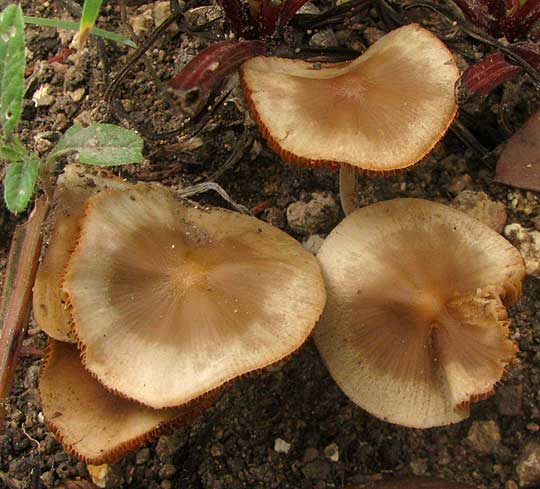
I've had problems identifying such small, delicate, brown-capped mushrooms before, so I knew to note all the field marks I could while the species was fresh at hand. You can see a cap's gills below:
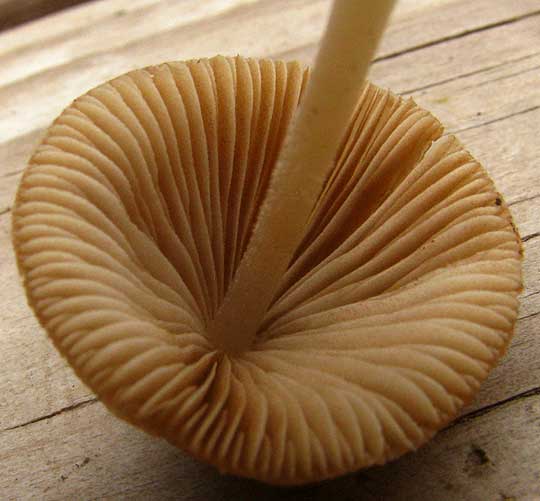
An important feature to notice is that the gills don't descend the stem, but rather are attached to it so narrowly that at first they don't seem attached at all. This detail turned out later to be of importance. One of the most important field marks, however, is shown below:
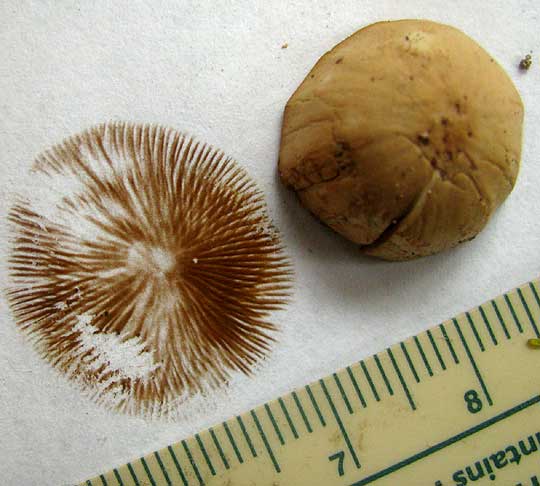
Many of our most common small, fragile, brown-capped mushrooms produce white spores, but this species surprised me with its dark brown ones, so clearly evidenced in the "spore print" made by leaving a spore-producing cap on a piece of paper for about three hours.
Seeing the brown spores was a bit exciting, because certain small, brown-spored mushrooms growing on livestock dung are among the most coveted by those who eat psychotropic mushrooms, such as several species of the genus Psilocybe. I don't eat them, but I'd like to find them.
In fact, as I began the identification process, I was more and more convinced that this was Psilocybe caerulescens, one of the most potently hallucinogenic of all mushrooms. The literature makes clear, however, that there's a whole swarm of species of little brown-capped, brown-spored mushroom species with which Psilocybe caerulescens can be confused.
Several very active online mushroom fora are open to the public, providing message boards where members can upload photos to be identified by others with more experience. Most members of such fora want to talk about eating and growing "magic mushrooms," but some real mushroom experts also monitor what's being uploaded. I uploaded our pictures to the Shroomery.Org website, asking if I really had Psilocybe caerulescens, and twenty minutes later a note appeared from "MidnightCity" saying that it wasn't. Rather, it was a species of the small genus Conocybe. No reasons for the opinion were given but at least now we had another name to work with.
Details distinguishing Conocybe from Psilocybe are largely microscopic, so out came the microscope. You can see our mushrooms' spore shape below:
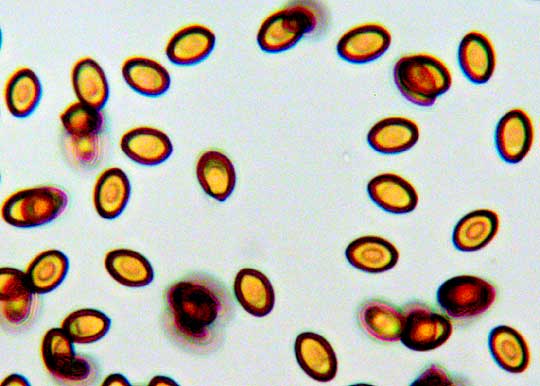
Conocybe spores are fairly similar to Psilocybe ones but according to images on the Internet these look more like Conocybe than Psilocybe -- they're more rounded and less pointy than Psiolocybe spores.
Reading more, I learn of a new microscopic feature to look for -- that of the shape of cells forming the cap's cuticle. Psilocybe cuticle cells are filamentous -- like more or less parallel fibers of squashed cigarette filters -- while Conocybe cells are "composed of inflated round cells resembling cobblestones," as the Shroomery.Org website says. My picture of our mushroom's cap cells is shown below:
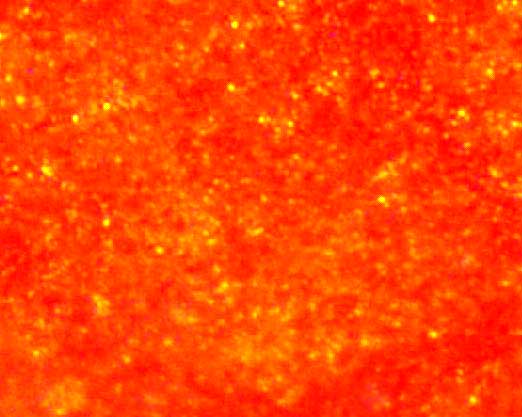
Despite the image's fuzziness we can make out that the cells are more like cobblestones than fibers in cigarette filters. At this point I begin thinking that "MidnightCity" knew what he or she was talking about.
*UPDATE: In the end, I couldn't identify which Conocybe species this might be. In 2024, much more information is available on the Internet, and now it looks like this may be the Golden Conecap, CONOCYBE AUREA.
Conocybe aurea mainly is documented in Europe, but also sparsely in the US, mainly along the western coast. Also it's been identified in a few places in Mexico and elsewhere. It's said to grow in nitrate-rich soils. Apparently its toxicity is unknown, though more commonly encountered related species are known to be toxic.